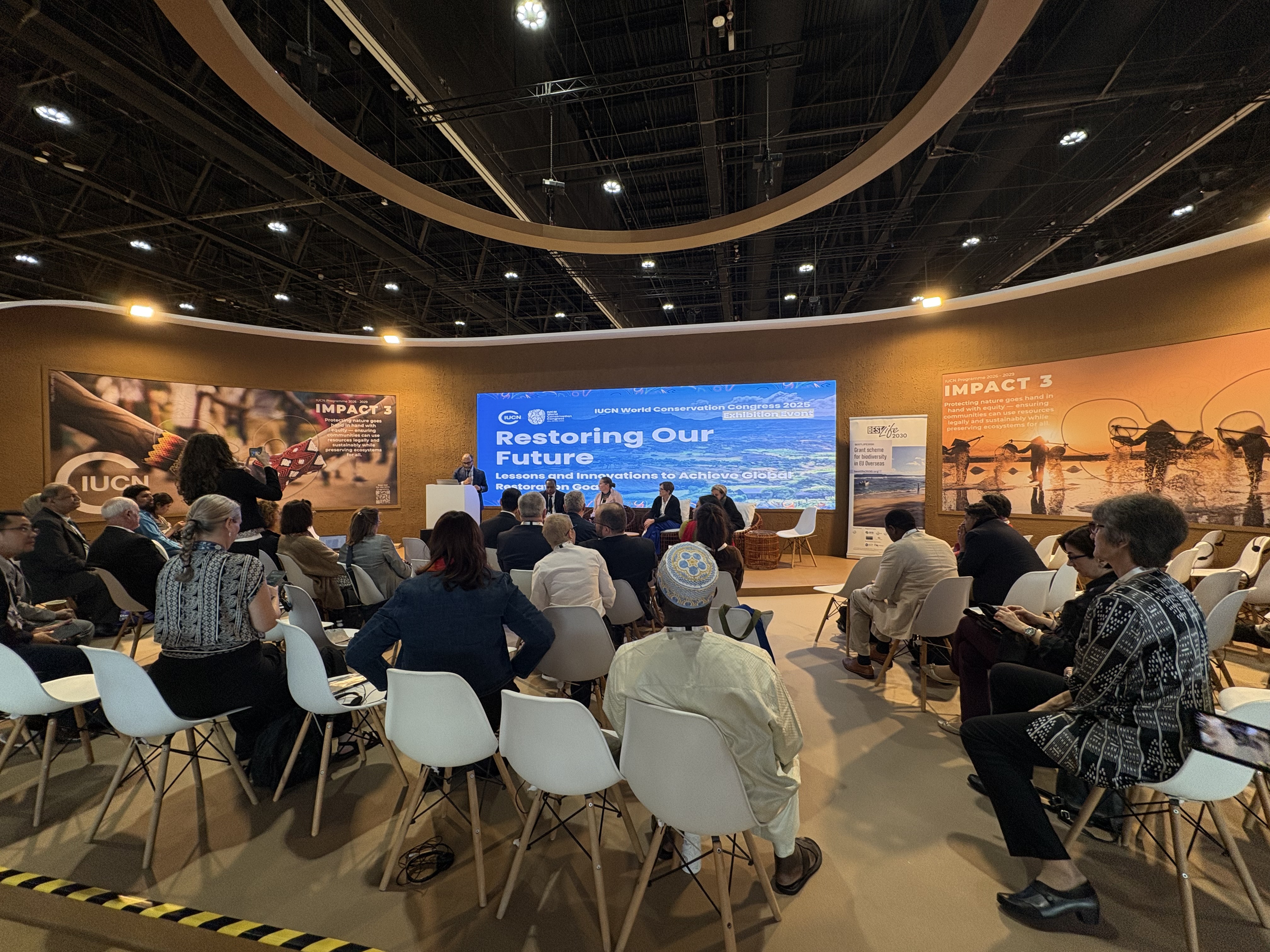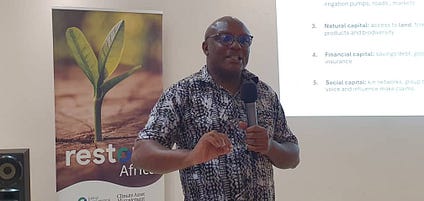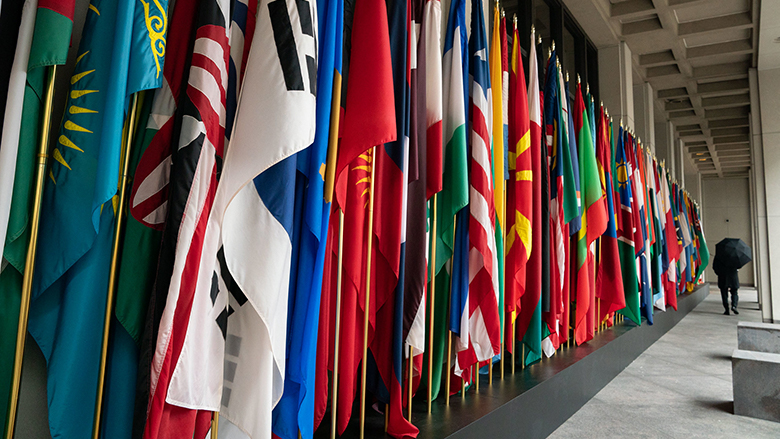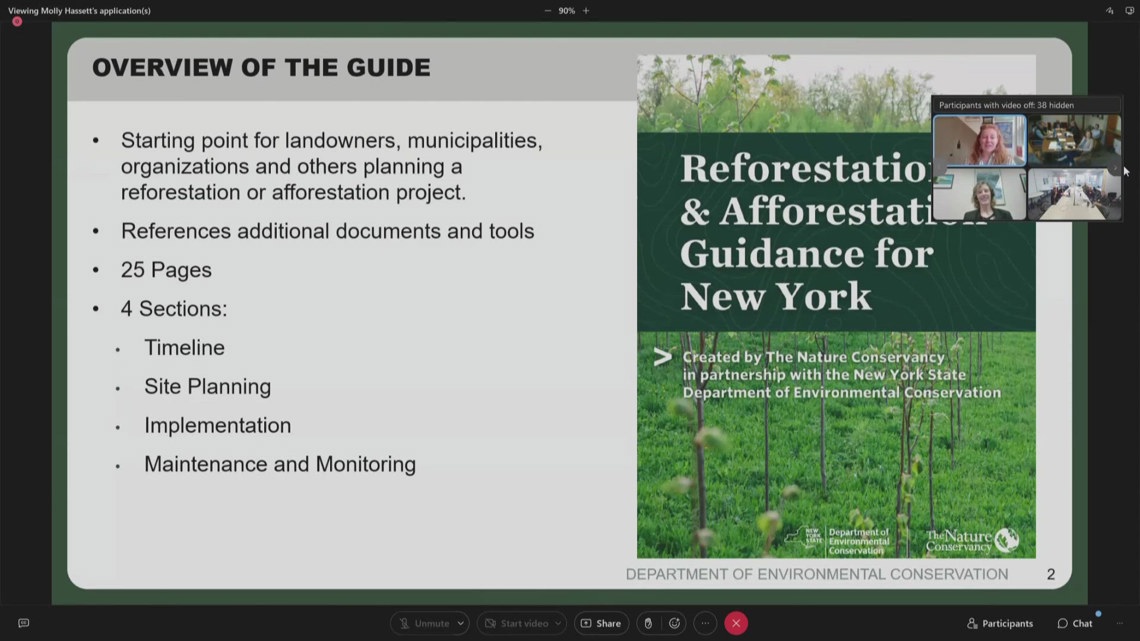Report on Ecosystem Restoration as a Catalyst for Sustainable Development
Executive Summary
A session convened at the IUCN Programme Pavilion examined the critical role of ecosystem restoration in achieving global sustainability targets. The discussion highlighted current successes, persistent challenges, and innovative solutions, framing restoration as an essential strategy for advancing multiple Sustainable Development Goals (SDGs). Key themes included the integration of restoration into national policies, the necessity of inclusive financial mechanisms, and the centrality of social equity. The consensus established that effective restoration links environmental integrity with social inclusion and economic opportunity, directly contributing to the 2030 Agenda for Sustainable Development.
Global Restoration Imperatives and the Sustainable Development Goals
The Scale of Ecosystem Degradation
Ecosystem degradation poses a significant threat to global stability and sustainable development. Current data indicates that between 20% and 40% of the world’s land is degraded, adversely affecting the well-being of approximately 3.2 billion people. This degradation undermines progress across numerous SDGs by diminishing biodiversity, ecosystem functionality, and climate resilience.
Alignment with Key SDGs
Ecosystem restoration is a foundational strategy for achieving the Sustainable Development Goals. Its impact spans across the environmental, social, and economic pillars of the 2030 Agenda.
- SDG 15 (Life on Land): Restoration directly addresses the goal of protecting, restoring, and promoting the sustainable use of terrestrial ecosystems by aiming to reverse land degradation and halt biodiversity loss.
- SDG 13 (Climate Action): By enhancing ecosystem functioning and adaptive capacity, restoration is a critical nature-based solution for climate change mitigation and adaptation.
- SDG 5 (Gender Equality) & SDG 10 (Reduced Inequalities): A central theme was the necessity of rights-based, gender-responsive approaches that empower women, Indigenous Peoples, and local communities as key agents of change.
- SDG 8 (Decent Work and Economic Growth): The concept of a “restoration economy” was highlighted, emphasizing its potential to create jobs and generate sustainable economic development.
- SDG 17 (Partnerships for the Goals): The session itself exemplified this goal, bringing together governments, international financial institutions, civil society, and scientific bodies to foster collaboration.
International Frameworks Driving Action
Several global initiatives are mobilizing action and setting clear targets for restoration, providing a roadmap for achieving the SDGs.
- The Kunming-Montreal Global Biodiversity Framework (KM-GBF): Target 2 aims to place 30% of degraded terrestrial, inland water, and coastal and marine ecosystems under effective restoration by 2030.
- The Bonn Challenge: This global effort targets the restoration of 350 million hectares of degraded and deforested land by 2030.
- The UN Decade on Ecosystem Restoration (2021-2030): A global movement to prevent, halt, and reverse the degradation of ecosystems worldwide, amplifying efforts to meet global goals.
Multi-Stakeholder Perspectives on Achieving Restoration Targets
National Commitments and Policy Integration
High-level government representatives affirmed their commitment to integrating restoration into national strategies to advance the SDGs.
- Armenia: The Minister of Environment outlined the country’s integrated approach, positioning restoration as a cornerstone of its climate and sustainable development strategies. This includes new afforestation programs and improved data transparency, demonstrating a commitment to SDG 15.
- Germany: The Federal Ministry for the Environment reaffirmed its leadership through the Bonn Challenge, emphasizing its role in promoting synergies between climate protection (SDG 13) and biodiversity conservation (SDG 15) to deliver on the 2030 goals.
Financial and Institutional Enablers for SDG Attainment
Panelists identified finance and institutional support as critical levers for scaling up restoration efforts.
- World Bank: The Global Director for Climate Change emphasized that unlocking private capital is essential. This requires de-risking investments and addressing systemic barriers like insecure land tenure, particularly for women, to ensure financial flows support community-led restoration and contribute to SDG 1 (No Poverty) and SDG 5 (Gender Equality).
- CBD Secretariat: The need to accelerate practical implementation of the KM-GBF’s Target 2 was stressed, with the launch of a global capacity-development program to support nations in achieving this goal, directly advancing SDG 15.
- United Nations Environment Programme (UNEP): The Deputy Director of the Ecosystem Division highlighted the “restoration economy,” which can deliver dividends for jobs (SDG 8), health (SDG 3), and biodiversity (SDG 15) if embedded within broader development policy.
Social Equity and Inclusion as a Cornerstone for Sustainable Development
A recurring theme was that restoration must be people-centric to be sustainable, directly aligning with goals for equality and social justice.
- Swiss Agency for Development and Cooperation (SDC): The importance of local ownership, participatory processes, and gender equality (SDG 5) was underscored, arguing that sustainable restoration must deliver long-term benefits for communities.
- Women4Biodiversity: The Director stated that true restoration includes the restoration of rights, recognition, and resources for women, framing it as an investment in resilience and justice (SDG 5 and SDG 10).
- FSC Indigenous Foundation: The Managing Director emphasized that Indigenous Peoples are essential knowledge-holders whose perspectives must guide restoration to restore balance between humanity and nature, reinforcing the principles of SDG 10.
Bridging Science, Policy, and Community Action
Experts from scientific institutions and national governments shared insights on translating global goals into local action.
- CIFOR-ICRAF: The Director General highlighted the need to bridge science and practice by combining local knowledge with strong data and inclusive policies to achieve restoration at scale.
- Brazil and Mexico: Representatives detailed how restoration is being embedded in national policies, from identifying priority sites to promoting nature-based tourism, offering replicable models for other nations working towards SDG 15.
- International Model Forest Network (IMFN): The network was presented as a model for partnership (SDG 17), connecting local communities to global resources to ensure restoration is locally relevant and advances equity and rights.
Conclusion: A Unified Path Towards Resilience and Equity
The session concluded with a clear consensus: achieving global restoration goals is fundamental to the 2030 Agenda. Restoration is not merely an ecological imperative but a human-centered pathway to building resilience, fostering equity, and achieving sustainable development. Success requires a holistic approach that integrates innovative finance, inclusive participation, and strong partnerships across all sectors to realize the interconnected benefits for climate, biodiversity, and human well-being as envisioned in the Sustainable Development Goals.
Sustainable Development Goals (SDGs) Addressed in the Article
SDG 15: Life on Land
- The article’s central theme is the restoration of degraded terrestrial ecosystems, combating deforestation, and conserving biodiversity on land. It discusses global goals like the Bonn Challenge, which aims to restore millions of hectares of degraded and deforested land, and national efforts in countries like Armenia and Brazil to increase afforestation and reforestation.
SDG 14: Life Below Water
- The article explicitly mentions the Kunming-Montreal Global Biodiversity Framework’s goal to restore “degraded terrestrial, inland water, and marine and coastal ecosystems,” directly connecting the discussion to the health and restoration of aquatic environments.
SDG 13: Climate Action
- The text links ecosystem degradation and deforestation to a reduced “adaptive capacity in the face of intensifying climate change.” It presents ecosystem restoration as a critical solution for climate protection and a cornerstone of national climate strategies, as highlighted by Germany’s and Armenia’s approaches.
SDG 5: Gender Equality
- The article strongly emphasizes the need for “gender equality and social inclusion” in restoration efforts. It points out the necessity of addressing systemic barriers like “insecure land tenure, especially for women,” and calls for “gender-responsive, community-led restoration” where women’s rights, participation, and knowledge are recognized and supported.
SDG 8: Decent Work and Economic Growth
- The concept of a “restoration economy” is introduced, which has the “potential to bring jobs, economic development, health, social, biodiversity, climate and ecosystem services dividends.” This aligns with promoting sustainable economic growth and creating employment opportunities through environmental stewardship. The mention of “nature-based tourism” also supports this goal.
SDG 10: Reduced Inequalities
- The article advocates for inclusive approaches that involve and benefit marginalized groups. It stresses that restoration goals cannot be met without including “smallholders and local community members” and recognizing that “Indigenous Peoples, women, and local communities are not only beneficiaries but essential knowledge-holders whose perspectives must guide planning, decision-making, and implementation.”
SDG 17: Partnerships for the Goals
- The entire event described in the article is a multi-stakeholder partnership, bringing together governments, international organizations (IUCN, World Bank, UNEP), civil society (Women4Biodiversity), and scientific institutions (CIFOR-ICRAF). The text highlights the importance of financial partnerships to unlock private capital, technical partnerships for capacity-building, and collaborative networks like the International Model Forest Network (IMFN) to achieve global goals.
Specific SDG Targets Identified
Under SDG 15: Life on Land
- Target 15.2: Promote the implementation of sustainable management of all types of forests, halt deforestation, restore degraded forests and substantially increase afforestation and reforestation globally. This is directly addressed by the Bonn Challenge’s goal to restore 350 million hectares by 2030 and Armenia’s new afforestation and reforestation programs.
- Target 15.3: By 2030, combat desertification, restore degraded land and soil… and strive to achieve a land degradation-neutral world. The article’s core focus is on restoring degraded land, citing the statistic that “20% – 40% of the world’s land is degraded.”
- Target 15.9: By 2020, integrate ecosystem and biodiversity values into national and local planning, development processes, poverty reduction strategies and accounts. This is reflected in the discussion of how countries like Armenia, Brazil, and Mexico are embedding restoration “in their countries’ national policies” and making it a cornerstone of their “climate and sustainable development strategies.”
Under SDG 14: Life Below Water
- Target 14.2: By 2020, sustainably manage and protect marine and coastal ecosystems to avoid significant adverse impacts… and take action for their restoration in order to achieve healthy and productive oceans. The article references the Kunming-Montreal Global Biodiversity Framework’s Target 2, which explicitly includes the restoration of “marine and coastal ecosystems.”
Under SDG 13: Climate Action
- Target 13.1: Strengthen resilience and adaptive capacity to climate-related hazards and natural disasters in all countries. The article states that ecosystem degradation undermines “adaptive capacity in the face of intensifying climate change,” positioning restoration as a key method to strengthen this capacity.
Under SDG 5: Gender Equality
- Target 5.5: Ensure women’s full and effective participation and equal opportunities for leadership at all levels of decision-making. This is supported by the call to ensure “everyone can contribute their skills and knowledge and have their voice heard” and the emphasis on recognizing the rights and resources of women.
- Target 5.a: Undertake reforms to give women equal rights to economic resources, as well as access to ownership and control over land. The article directly points to the need to address “insecure land tenure, especially for women,” as a key barrier to unlocking finance for restoration.
Under SDG 8: Decent Work and Economic Growth
- Target 8.9: By 2030, devise and implement policies to promote sustainable tourism that creates jobs and promotes local culture and products. This is implied through the mention of promoting “nature-based tourism through initiatives such as long-distance ecological trails” in Mexico and Brazil.
Under SDG 17: Partnerships for the Goals
- Target 17.3: Mobilize additional financial resources for developing countries from multiple sources. The discussion on “financial mechanisms and instruments” and the need to “unlock private capital for restoration” directly relates to this target.
- Target 17.9: Enhance international support for implementing effective and targeted capacity-building in developing countries. The launch of the “Target 2 Roadmap” by the CBD Secretariat and partners is cited as a “global capacity-development programme” to help countries with implementation and reporting.
- Target 17.17: Encourage and promote effective public, public-private and civil society partnerships. The event itself, featuring speakers from government, finance, civil society, and science, exemplifies this target, as does the mention of networks like the IMFN that connect local communities to global resources.
Indicators for Measuring Progress
Mentioned Indicators
- Area of degraded land: The article states that “20% – 40% of the world’s land is degraded,” which serves as a baseline indicator for the scale of the problem (relevant to SDG Target 15.3).
- Area under restoration: The article mentions two specific quantitative indicators:
- The Bonn Challenge’s goal to bring “350 million hectares by 2030” under restoration (relevant to SDG Target 15.2).
- The Kunming-Montreal Global Biodiversity Framework’s Target 2, which aims for “30% of the total area of degraded terrestrial, inland water, and marine and coastal ecosystems is under effective restoration by 2030” (relevant to SDG Targets 15.3 and 14.2).
Implied Indicators
- Financial flows for restoration: The emphasis on the need to unlock private capital and leverage financial mechanisms implies that an indicator would be the amount of public and private finance mobilized for restoration projects (relevant to SDG Target 17.3).
- Integration of restoration into national policies: The discussion of countries embedding restoration into their national policies and development strategies suggests that the number of countries with such integrated plans could be an indicator (relevant to SDG Target 15.9).
- Gender-responsive policies and projects: The focus on gender equality and women’s land tenure implies that progress could be measured by the number of restoration projects that are gender-responsive or the number of countries that have reformed land tenure laws to secure women’s rights (relevant to SDG Target 5.a).
- Job creation in the restoration economy: The mention of a “restoration economy” that can bring jobs suggests that the number of full-time equivalent jobs created in restoration-related activities would be a key indicator of success (relevant to SDG Target 8).
SDGs, Targets, and Indicators Analysis
| SDGs | Targets | Indicators |
|---|---|---|
| SDG 15: Life on Land |
|
|
| SDG 14: Life Below Water |
|
|
| SDG 13: Climate Action |
|
|
| SDG 5: Gender Equality |
|
|
| SDG 8: Decent Work and Economic Growth |
|
|
| SDG 10: Reduced Inequalities |
|
|
| SDG 17: Partnerships for the Goals |
|
|
Source: iucn.org






